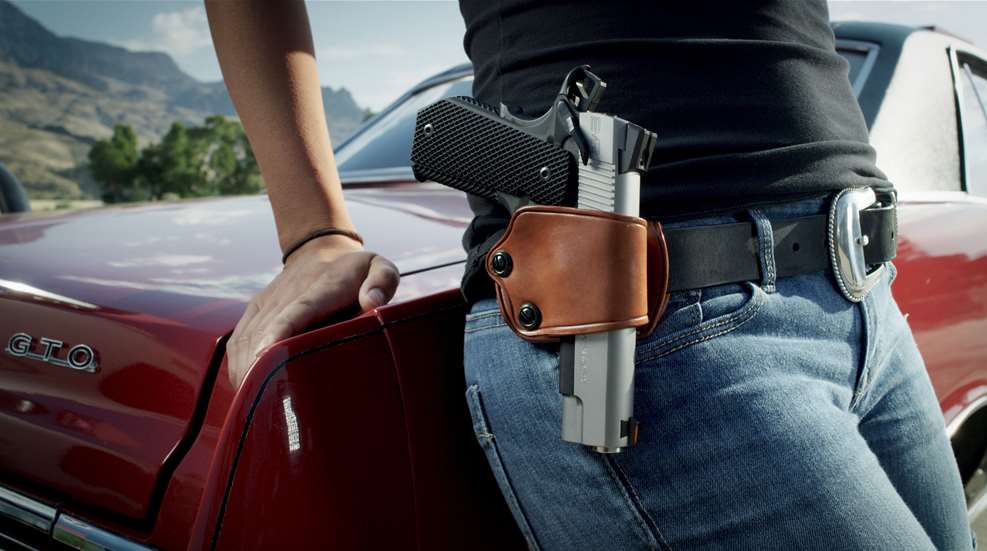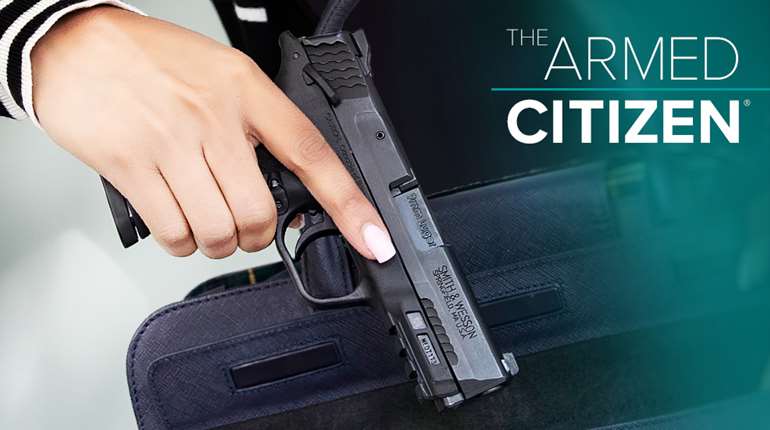
There’s no disputing that women comprise the largest group of consumers of the many, many, many … (did I say many?) striker-fired 9 mm pistols that have entered the market in recent years. The constant one-upmanship by gun makers in terms of engineering refinements, capacity, size, weight and other factors all contribute to why women are experiencing an infatuation with the little black gun.
To be sure, these guns are uncomplicated, generally easy to shoot and easy to clean. We at NRA Women choose to believe that gun manufacturers have finally been learning exactly what women like in their handguns through surveys such as the American Rifleman’s Ladies Pistol Project and The Well Armed Woman’s annual survey of the most popular guns purchased by about 6,000 of the organization’s members. This valuable data provides important feedback to gun makers who are sincerely interested in catering to our discerning demographic.
And that’s all great. But I have a suggestion. For the women who are married to their Smith & Wesson M&P EZs, Ruger LCPs, Glock 43s, Walther CCPs, Mossberg Mc2cs, Springfield XDs, Taurus G3s or SIG P365s, I’m asking you to occasionally “cheat” on them—with a 1911-style pistol—just for fun.
That’s right, swipe right the next time you’re offered a chance with a 1911. Now, I don’t want to divorce you of your polymer pistol, after all, I love mine for the same reasons you do: They are concealable, lightweight, affordable, intuitive, have few parts, may have higher capacity magazines, and are largely indestructible. They are utilitarian and reliable tools for target shooting and self-defense. And if you have a favorite black polymer gun on which you rely for self- and home-defense—don’t ever stop training with it. This is not a striker-fired intervention.
But those familiar with my shooting habits know that I have a preference for 1911-style pistols when on the range. I own a few, and reasons for my affinity for them are also well-known. However, many women, particularly those new to shooting, have fired only polymer pistols, due to their prolific nature and the fact that most of them are point-and-shoot right out of the box. One might say they are 2021’s revolvers in terms of guns suggested "good for women."
There are actual reasons why you really should see and feel what you’re missing as you bypass the 1911s that present themselves so stately in the glass cases at gun stores. The good news is that if you live under the same roof with a lifelong gun owner, he or she likely already owns a 1911 of one sort or another, since it is the platform on which many of them cut their teeth.
Want to know what you’re missing? Without getting very technical about the gun’s inner working parts, here are 10 reasons why women should give the 1911 platform a try:
1. It’s traditional. This gun is called the 1911 because that is the year it was introduced after being designed by arguably the greatest firearm designer of all-time, John Moses Browning. The official sidearm of the U.S. military from 1911 to 1985, Browning’s design has not rested on its laurels as a two-time World-War champ, having been copied by most of the big gun manufacturers and countless smaller custom gun makers. But don’t let its maturity fool you; its sideburns may be a little grey, but the platform remains as popular as ever among competitive shooters and general firearm enthusiasts—just ask the Civilian Marksmanship Program about the demand for the thousands of original surplus M1911A1s it released in 2018, decades after being repatriated to their American homeland.
2. It’s distinguished! Not to be entirely superficial, but even the most basic semi-automatic 1911s will turn far more heads on the range than a hunk of black plastic any day of the week. Barrel finishes vary from polished stainless to blued, to any of the more modern Nitride or other utilitarian coatings. Sometimes the finishes are simply for aesthetic reasons, but don’t hate it because it’s beautiful. Call me old-fashioned, but I do not see the charm or soul in a colorcase-hardened Glock.
3. It feels good! It has a firm trigger and it’s single (single action, that is). What you'll miss is the familiar short trigger reset offered on most striker-fired pistols, but you will feel something much better—a buttery smooth single-action trigger pull and a crisp break that leaves you with a desire to … pull it again, and again. This feature in and of itself can help minimize the flinch that so often occurs when you are anticipating the recoil of a trigger press, particularly when you know it’s going to be a bit snappy (read painful) with a lightweight higher-caliber pistol. All of this ultimately translates to a more fun and accurate day at the range, even if you're shooting one chambered in .45 caliber.
4. It carries its weight well. This is one instance where women can agree that packing on the pounds can be a good thing. While not all 1911s have 5” barrels, when you pick up a 1911 you absolutely know there is a gun in your hand, one built on a metal frame—usually steel. But even an aluminum-framed 1911 will absorb most of the powerful recoil of a .45-cal. cartridge, leaving your hands and nails in the same condition in which you walked onto the range.
5. Size matters, but only if you’re going to carry. CCW considerations notwithstanding, the hammer-fired mechanism and the single-action trigger are what mostly distinguish the 1911 platforms from the polymers. Therefore a 1911 will feel like a 1911 no matter if it’s a Colt-designated full-size Government model (5” barrel); “Commander” size (4.5” barrel with full-size frame); or “Officer’s Model” (3.5” barrel). Many other sizes of 1911s also exist (hence the designation “1911-style” pistols), including the very popular concealed-carry sized .380-cal. SIG P238 and 9 mm P938, and the 80-percent-size Browning models. Some of my favorite 1911-style pistols remain those in the Springfield Armory EMP series of smaller-framed 9 mms.
6. It’s safe. A grip safety and a manual thumb safety are standard on 1911s, so technically that’s one more safety than a Glock and some other striker-fired models where a thumb safety is optional. This matters most if you plan to carry a 1911, which is when you’ll decide in which condition you want to carry.
7. It dresses up well. It's only basic black (or blued) if you want it that way. Although many polymer gun makers have started to include interchangeable parts like a choice of backstrap sizes and, in some cases, sights, the 1911 has always been a customizable platform. Generally speaking, 1911s can accept an endless array of upgrades, starting with fancy (faux) ivory or stag grips, competition sights; they easily accept intricate engraving, porting and any number of other custom upgrades that are only limited by the imagination.
8. It has an exposed hammer. This allows the hammer to be easily and manually cocked, and sets up the nice short smooth trigger pull referred to earlier. The release of the slide each time the gun is fired will automatically cock each subsequent shot. In plain English, this means it’s easy to operate.
9. It can be a confidence booster. I have made it a habit to end my range sessions with a 1911. This is particularly helpful if I have been having an “off” day shooting the polymers, especially when I am testing a few different models. They all feel a little different depending on their size, caliber, features, trigger pull. My accuracy with them also depends on various external factors like range temperature and humidity, or my hydration level. I need the regular practice with those black guns too, though, so I must shoot them or my skills suffer. But it’s my 1911s that help me end my session feeling a bit—OK, a lot—better about my abilities.
10. Plastic is not a replacement for the real thing. OK, let’s admit it, we were all thinking it. In this case, it’s true. Once you’ve fired a 1911, it will change your perception of how a gun can feel when it doesn’t punish you after sending 100 rounds downrange. In fact, it can be downright pleasurable, and when you see your rounds hit exactly where you have aligned your sights, you will have an entirely whole new appreciation for this firearm that is oft criticized for being outdated. But if there was much credence given to that notion, our most successful firearm manufacturers would not continue to introduce many, many new models of 1911 every year since, well, 1911.















































